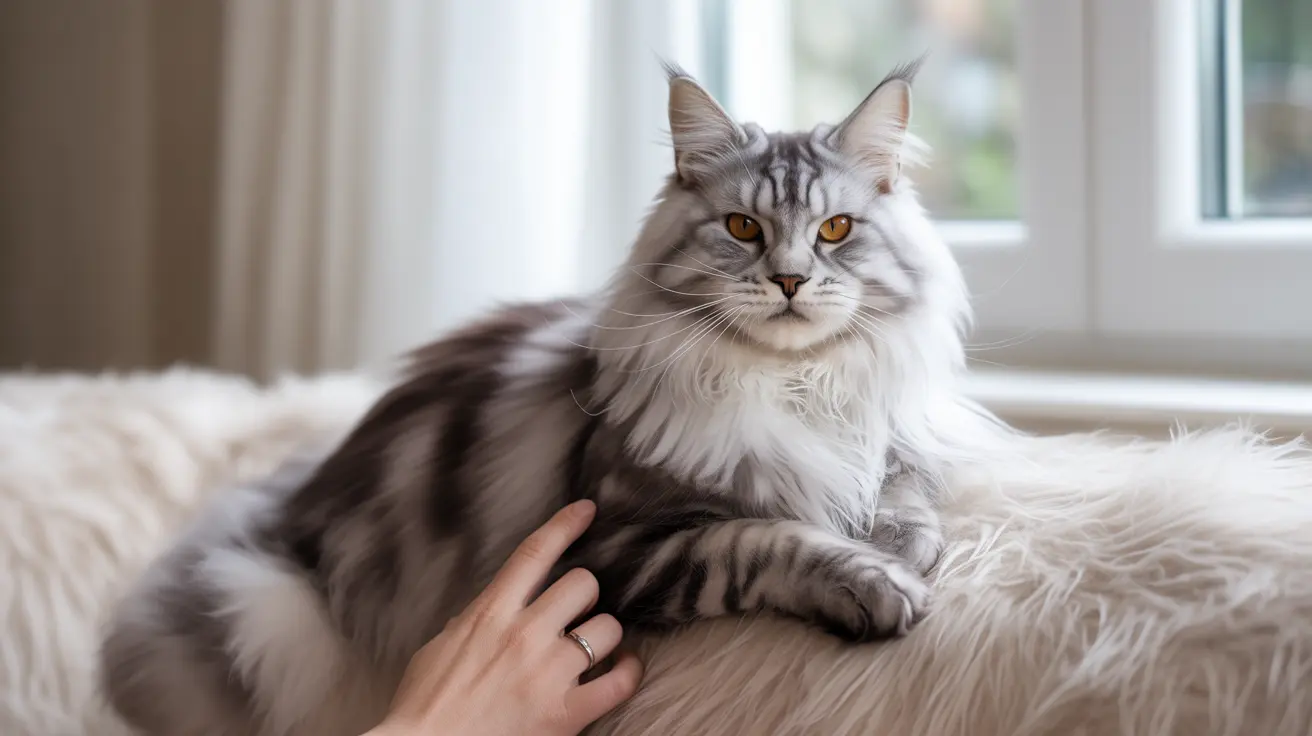If you've ever wondered why your cat hits you with their tail, you're not alone. This common feline behavior is actually a sophisticated form of communication that can convey various emotions and intentions. From showing affection to expressing irritation, understanding why cats use their tails to interact with humans can help strengthen your bond with your feline friend.
Let's explore the fascinating reasons behind this behavior and learn how to interpret what your cat is trying to tell you when they engage in tail-hitting gestures.
The Different Meanings Behind Cat Tail Hitting
Expressing Affection and Trust
When your cat gently taps or wraps their tail around you, it's often a sign of affection and trust. This behavior mimics how cats interact with other cats they're comfortable with, essentially treating you as part of their family group. Many cats will perform this gesture while sitting next to their favorite humans or during quiet bonding moments.
Seeking Your Attention
Cats are masters at getting what they want, and tail-hitting is one of their clever tactics. If your cat deliberately hits you with their tail while you're busy working, reading, or doing other activities, they're likely trying to grab your attention. This could mean they're hungry, want to play, or simply desire some quality time with you.
Reading Your Cat's Tail Language
Tail Position and Movement Indicators
The way your cat moves their tail can tell you a lot about their mood and intentions:
- Gentle swishing or tapping: Usually friendly and positive
- Quick thrashing or thumping: Signs of agitation or annoyance
- Upright tail with slight curve: Confidence and happiness
- Puffed-up tail: Fear or defensive posture
Understanding Context Clues
To accurately interpret tail-hitting behavior, it's essential to consider the overall context and other body language signals. Look for additional cues such as:
- Ear position (forward, flat, or turned back)
- Facial expression and eye contact
- Body posture and muscle tension
- Accompanying vocalizations
When Tail Hitting Signals Discomfort
Sometimes, tail-hitting can indicate that your cat is overwhelmed or uncomfortable. If your cat's tail movements become more forceful or are accompanied by other signs of stress, it's important to give them space. This is particularly common during petting sessions that have gone on too long or when your cat feels cornered.
Building Better Communication with Your Cat
Understanding your cat's tail signals can help you respond appropriately to their needs. When your cat hits you with their tail, take a moment to assess the situation and their other body language cues. This awareness will help you build a stronger, more understanding relationship with your feline companion.
Frequently Asked Questions
Why does my cat gently hit me with its tail—is it a sign of affection?
Yes, gentle tail hitting is often a sign of affection and trust. Cats use this behavior to show love and comfort, similar to how they interact with other cats they're close to.
What does it mean when a cat taps or slaps you with its tail repeatedly?
Repeated tail tapping usually indicates your cat is trying to get your attention. They might want food, playtime, or simply acknowledgment of their presence.
How can I tell if my cat's tail hitting shows annoyance or a request for attention?
Look at the force and speed of the tail movement. Gentle taps usually signal attention-seeking, while forceful slaps or rapid movements typically indicate annoyance.
What do different cat tail positions and movements say about their mood?
An upright tail usually indicates happiness and confidence, while a puffed-up or thrashing tail suggests fear or agitation. Gentle swaying can show interest or contemplation.
Can cats use tail hitting as a way to communicate curiosity or interest in what I'm doing?
Yes, cats often use their tails to express curiosity about your activities. They might gently tap you while you're doing something interesting to show they want to be involved or understand what's happening.
Remember, every cat is unique, and their tail communication patterns may vary. Pay attention to your individual cat's habits and preferences to better understand their personal language of tail gestures.






